Wearables: 2014 and Beyond
by Stephen Barrett on January 15, 2015 11:50 AM EST- Posted in
- Wearables
- Apple
- Microsoft
- pebble
- Android Wear
- Microsoft Band
- Fitbit
Wearable Products in 2014
Microsoft
In 2014, seemingly out of nowhere (as there were no leaks or press ahead of time), Microsoft launched their first wearable since 2004 with the Microsoft Band. The Microsoft Band utilizes a Cortex-M4 processor and thus runs an embedded OS, not Windows NT. As with other devices using microcontrollers, its first focus is fitness tracking and not smart watch functionality (although that is also included). Microsoft however does fitness slightly differently than their competitors and actually regards this as the launch of both the Microsoft Band and their health platform, Microsoft Health.
Microsoft Health is a cloud service, such as OneDrive, that aims to help improve the health of its users through data analysis and actionable feedback. Activity tracking devices and apps that connect to Microsoft Health publish data, with your permission, to the Microsoft Health server. Microsoft claims their cloud data framework and analysis provides the only total health service available. Additionally, the Microsoft Health framework is referred to as an open platform, therefore other companies can interface with it as both publishers of data and subscribers of analysis. Microsoft Health also connects to the existing Microsoft service, HealthVault, which contains personal and family medical information and lab results.
The Microsoft Band itself is the combination of 10 sensors, including some interesting ones such as skin temperature, UV light, and galvanic skin response. Uniquely, the Microsoft Band works with all three major mobile operating systems (iOS, Android, and Windows Phone) by connecting to the corresponding Microsoft Health app. However, you can perform activities (such as running) without a paired device.
Another unique feature is the continuous heart rate monitoring. Other devices, such as Android wear, only periodically query the wearer’s heart rate. Microsoft claims this allows them to do better holistic analysis of health. In my experience with the Moto360, depending on how tight you wear the device, the heart rate sensor may not work. Comparatively, the Microsoft Band is mechanically designed so the best way to wear it is always in close contact with your skin. Finally, Microsoft will even license the electronics and software design of the Microsoft Band for other companies to create their own wearables connected to Microsoft Health.
The band itself provides some smart watch features such as calendar, email, and messaging notifications. When paired with a Windows Phone, Cortana support is also available for similar functionality to Google Now. One difference between Android Wear and the Microsoft Band is with app interfacing. As mentioned previously, Android Wear relies on apps running alongside (on your smartphone) or on the device to do things such as run tracking. The Microsoft Band instead has built in support for run tracking, and can publish that data to both Microsoft Health and any compatible app like RunKeeper. Therefore, the Microsoft Band out-of-the-box has several fitness related functionalities without relying on 3rd party apps.
Given my less-than-stellar experience with RunKeeper providing run tracking on Android Wear, a first party approach to fitness is appealing. However, it remains to be seen if Microsoft can keep pace with the wide open field Android Wear provides to app makers.
All of this combined makes a strong argument that Microsoft is ahead of their competition for health related wearables. Google has Google Fit, which plans to provide similar cloud-health functionality and already has some APIs for apps to connect with it, but the web site for Google Fit is downright embarrassing and looks like a simple placeholder with almost no valuable information. Google also had Google Health, which was similar to Microsoft HealthVault, but Google shut down the service in 2011.
I have requested a Microsoft Band for review to analyze how well Microsoft has executed both the Band and Health launches. There are of course other aspects to the Band (such as guided workouts) I will cover at that time.
Apple Watch
While this is a 2014 year in review article and Apple technically did not launch anything in 2014, it is worth mentioning their announcement of the Apple Watch. In America at least, it is often the case that a technology will arrive on the market well ahead of Apple’s embrace and not see widespread acceptance. When Apple finally deploys the same technology, the technology crosses the chasm and sees widespread proliferation. NFC payment and Apple Pay are a good example. I saw one or two places offering NFC payment before Apple Pay; now there are dozens. Therefore, Apple announcing the Apple Watch is a watershed moment for wearables.
Officially coming to market in spring 2015, the Apple Watch experience appears to be more similar to Tizen based Samsung devices than Android Wear. To start with, the device itself contains WiFi in addition to Bluetooth and therefore should have more freedom than a standard Bluetooth enabled wearable. The core functionality of the device also does not revolve around Siri but appears to be a full blown iOS style launcher.
The Apple Watch likely uses an application processor (AP) and does not rely entirely on a microcontroller. This also correlates with the Apple estimated battery life of one day due to high consumer usage, as an AP will draw more power than a microcontroller when in use. The exact quote from Tim Cook is, “I think given my own experience, and others around it, that you’re going to wind up charging it every day. Because you’re going to use it so much.” Utilizing an AP opens the doors to more use of frameworks and APIs than low-level embedded coding, and therefore facilitates the 3 party app model.
Apple intelligently recognized the need for personalization and styling in a wrist worn wearable and will offer a staggering 34 different models of the device with varying cases, sizes, bands, and editions (Sport, Standard, Gold). Two interesting innovations set to launch with the device are a pressure based touch screen and a tap feedback output, providing a tap sensation in addition to a traditional vibration. We will have more coverage of the Apple Watch when it launches in 2015.
Others
Several other wearables exist (and are more popular in the case of Pebble and Fitbit), but these are going to face an increasingly difficult battle for relevancy in the face of efforts from the main software ecosystem players – Apple, Microsoft and Google. However, Microsoft’s strategy of licensing hardware design and Android’s more off-the-shelf operating system approach means we should continue to see unique wearables going forward.
Pebble Steel
Pebble is likely the most mature smart watch wearable at this point, given its launch in 2013. Pebble devices possess many days of battery life, a unique perk over the competition. Pebble owes its battery life to the use of a low power microcontroller, low resolution e-paper display, non-touch screen, and only three sensors (accelerometer, compass, light sensor). Therefore, this is certainly not a smartphone on your wrist.
Interfacing with Pebble is accomplished with the set of four buttons on its sides. Pebble began as a dedicated notifications assistant, relaying notifications from paired devices, but has since expanded with some simple apps from 3rd party developers like QR code display to more complex apps such as GoPro control and RunKeeper. In 2014, Pebble launched the follow up, Pebble Steel. The Pebble Steel upgrades the mechanics from plastic to metal, and as I noted with my time using the leather banded Moto360, metal is much appreciated.
Pebble boasts the best water resistance of the lot, at an incredible 50 meters of depth. Other devices sporting IP67 are only okay up to a meter for 30 minutes, meaning if you jump into a pool you need to be very careful how far you let your arm drift down so you might as well take the device off.
FitBit Charge and Surge
Fitbit launched as an activity tracker in 2008 and has since been iterating on their designs. The first several revisions were clip on devices attached to your clothing, but since the Fitbit Flex in 2013 all have been wrist worn. I personally see wrist worn Fitbit devices everywhere and even worn as fashion accessories. My sister wears a Fitbit that is so decorated with 3rd party accessories it is difficult to discern it as a Fitbit instead of a simple bracelet.
These devices track steps taken, calories burned, and distance traveled. They can also do sleep tracking if you wear them 24 hours a day. Groups of coworkers or friends can use a connected smartphone app with social features to compete on how many steps taken and individuals can set personal step goals.
The Fitbit Charge launched in November 2014 and contains a small OLED display that boosts the utility of the Fitbit. The display shows the time, how many steps taken, and displays caller ID if your paired smartphone rings. The time and steps taken display are of notable utility as they prevent a trip to a pocket or purse to find the same information.
The Fitbit Charge HR supplements the Charge with a heart rate sensor. This expands the Fitbit further into a fitness device and begins pushing Fitbit into active activity tracking, such as running or cardio workouts. Alongside launching the Charge HR, Fitbit also expanded their app to record workouts, food eaten (through a barcode scanner or manual entry), and badge earning through workout goals. This was a significant launch for Fitbit to leverage their popular steps tracking position into remaining competitive with the bigger smart watch players.
The Fitbit Surge was announced in 2014 but will launch in early 2015. The Surge adds GPS and an LCD display to extend Fitbit’s activity tracking and smart watch functions.



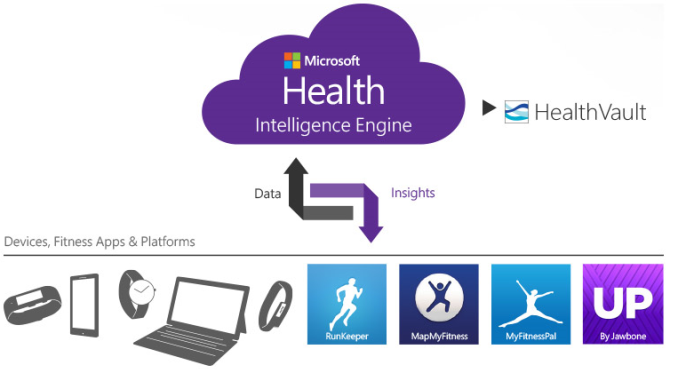
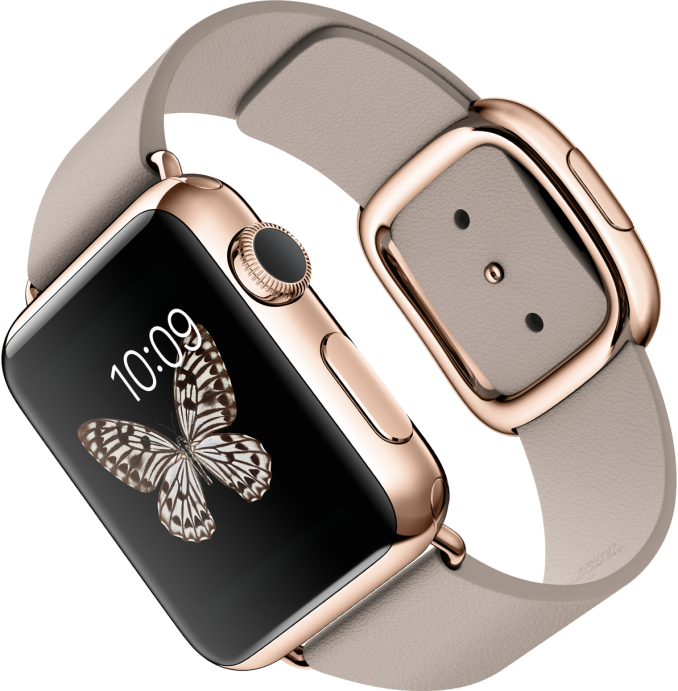
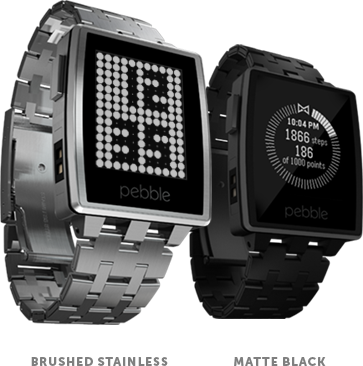
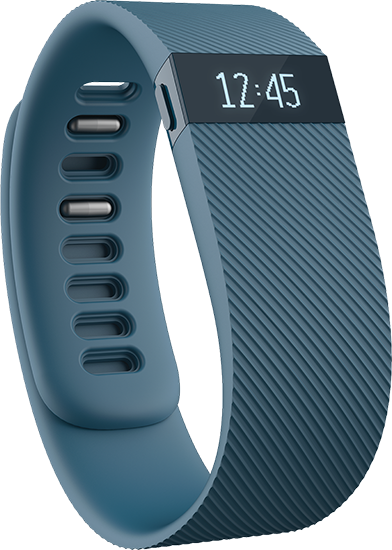
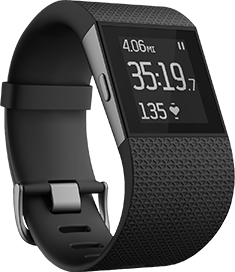








79 Comments
View All Comments
loki1725 - Monday, January 19, 2015 - link
I'm one of the people that has yet to see a need for the wearable, but my wife uses her Fitbit a LOT, and it's changed some aspects of her daily routine.For the fitness side of things, one of the aspects of devices I would like to see reviewed is accuracy. I have two data points (not enough for a full conclusion, but definately enough for an opinion) on fitness trackers accuracy and I would like to see that expanded.
When you review things with pedometers, compare their recorded steps to actual steps. I tried to use an app on my smart phone, and it recorded 15 steps when I shook the phone a few times, and 8 steps while I took my dogs on a 2 mile walk. We've also put my wife’s FitBit on our dogs collar while playing fetch. That earned her 800 extra steps for the day in about 10 minutes.
The other options like calories burned and active minutes tracked seem very suspect to me on many devices. The amount of assumptions you have to make to get from something like hear rate to calories is pretty large, and I doubt this is very accurate.
kashyapvijay - Wednesday, January 21, 2015 - link
$125 Citizen Eco drive (no battery; runs forever) watch is much better value compared to $300 wearable, which only coverts my pocket watch (phone watch function) into a wrist watch. Wearable has to lot more (blood pressure measurement, blood glucose measurement, medicine injection, etc.) before it can justify claim on wrist, a very scarce real estate.GuardianAngel470 - Wednesday, January 21, 2015 - link
For those wondering whether anyone even wears watches anymore, I'm 6' 3" and virtually no chair I regularly come across is designed for my height or greater. Digging my phone out of a pocket that is at a < 90 degree angle to my torso is not even remotely convenient enough for me to forgo a watch, especially as phones grow in size.And for me, the question is really why would I bother getting used to that? Less than a second to check the time, date, and day on my wrist or 5, 10, even 30 seconds for a big phone in a sturdy case stuck obstinately in my pocket; the choice is a flat out no-brainer.
My watch is, for all my purposes, completely waterproof, won't blind me at night, is completely invisible in terms of comfort, is more durable than a Nokia 3310, and needs a new battery every year and a half. Not a single smart watch, cell phone, or otherwise offers all of those features, especially not for under $60.
So yeah, I still wear a watch. When a smart watch manages to be waterproof down to 100M, low brightness, incredibly comfortable, nigh indestructible, and doesn't need to be charged for a year, then we'll talk.
eldakka - Thursday, January 22, 2015 - link
What I don't want in a smartwatch:1 microphone
2 camera
3 speaker
With the ability to surreptiously turn on these functions that various criminal and governmental (same thing these days really) organisations have my sony smartwatch that doesnt havr any of these features is perfect.
When I have an important/confidential meeting (e.g. doctor, financial consultant, business meeting, stripper ahem) I can leave the phone on but outside the room, within bluetooth range, and hold my conversation without any privacy implications while also still being able to receive important notifications (incoming calls, sms).
I dont need to be able to make/receive calls on the watch itself, thats what the phone is for.
halcyon - Thursday, January 22, 2015 - link
It will be all about sensors, software ecosystem, looks and price.Samsung doesn't get it.
microsoft half gets it.
Apple gets it, but of course, is a closed ecosystem (it's a mere 16% of the mobile market, regardless of what people in the USA think). Also, Apple skips on the sensors.
Intel's owned Basis has the sensors, but it looks like cr*p and support is....well... it's not buried on the Intel graveyeard to languish like all their other purchases.
Fitbit is a passing phenomenon, somebody will pick them up for dollars or they will just wither away in the next 3 years.
Then there are the specialists.... Polar.... Suunto.... Garmin and others.
They could theoretically do something wild: great looks, cross-platform (good support!), plenty of sensors, great for sportspeople... But they are too un-innovative, too slow and have too meager resources.
In the end, Apple will rule their own segment. Some people will mistakenly think it's the whole universe.
Samsung will spam with a huge portfolio and some of them will float - eventually.
LG doesn't get it.
THen there's the Swiss entry. It will happen this year or the next year from the Swatch group. They have too much to lose.
They know fashion like no other. They know how to brand. They have good distribution. Mass production. Software and really understanding smart wearables is not their thing.
The market is just barely starting to be carved out -- it can't even be divided yet.
But it looks like almost all of the offerings are "meh" at best.
In five years, let's take another look :-)
Will Robinson - Friday, January 23, 2015 - link
Nice article but did the author really just use "inventory" as a verb in the first sentence?wtf?
yhselp - Friday, January 23, 2015 - link
Consult a dictionary. It can be used as a verb, and not just in American English. In this case, it's been used as "to summarize".g00ey - Saturday, January 24, 2015 - link
Pain in the ass? The headphones are supposed to be worn in the ears, not up the hiney :)cyberssd - Friday, January 30, 2015 - link
Screen size & aspect ratio are most important to me. Small square screens just don't cut it. Manufacturers need to think ultrawide 21:9.